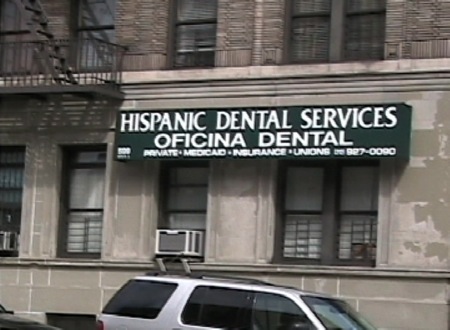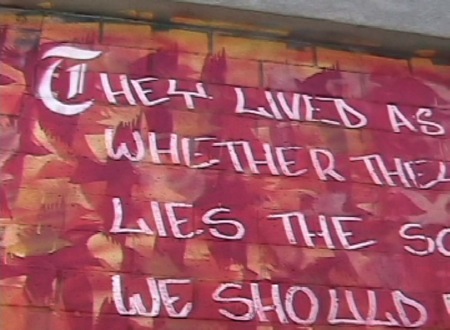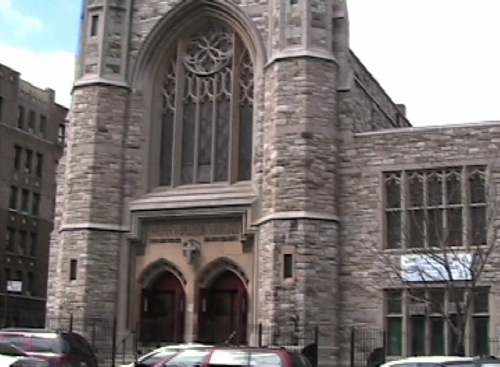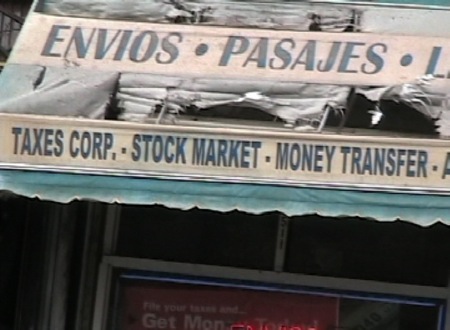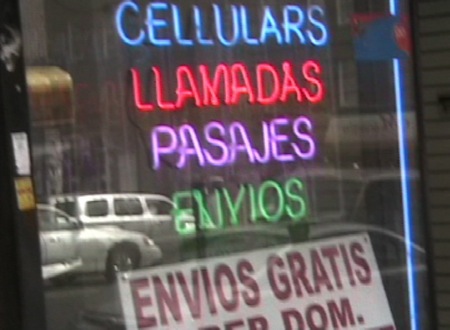Quinns rescue page
From Decoding New York
Contrary to the belief suggested by articles like "Washington Heights: New Hopes in a Patchwork Neighborhood," from the New York Times, and the article "Close-Up on Hudson Heights," from the Village Voice that Washington Heights is an ethnic neighborhood well on its way toward gentrification, the Washington Heights that we observed seemed to be, with the exception of one McDonald's with menus published in Spanish, an area run by local businesses, catering to a largely Hispanic community with interests in two nations, which they considered to be home.
There are many elements in this community that suggest a desire to replicate conditions apparent in Mexico and the Carribean, such as the large number of small shops with sign names in Spanish, the Hispanic-centered cuisine, or the Reggaeton music blasting from cars and store-fronts. This new community is unique in that it caters to a population with a divided identity.
This divided identity became apparent to us upon observing the overwhelming number of businesses centered around customers with origins in two nations. The majority of small businesses we encountered were related to travel, shipping, or mailing to other countries.
Evolution:
According to Nancy Foner from her text, "New Immigrants in New York," Washington Heights in the past had been an area that many Greek and Irish immigrants along with Soviet Jewish immigrants would flock to in the early 1900s. She notes that Washington Heights used to be a cultural hub for Soviet Jews, who enlivened this fading area and economy by introducing new "accented nightclubs, Georgian restaurants and sushi bars, state-of-the-art electronics stores, and international groceries."
However, ironically, we didn't see evidence of one Jewish or Irish related institution. In fact, with the exception of the occasional Chinese restaurant, or nail salon run by workers from places like Vietnam, the area was almost entirely Hispanic with Spanish speakers and Spanish businesses all around.
The only other cultural influence prevalent throughout the streets filled with Hispanic business and culture were two Greek Orthodox churches which we came across, which could be reminiscent of the area's Greek history.
What's Real:
The most important theme from our experiences in Washington Heights related to the subject of what is real, or authentic, is the cultural gap that we experienced upon entering a Spanish speaking area with no true knowledge of the Spanish language or culture. After walking into six seperate stores and restaurants with clip-boards asking local residents for interviews, and receiving blank stares because they were not fluent in English, we were very discouraged.
This left us with the overriding idea that if one is an outsider trying to explore the heart of a foreign cultural enclave with no knowledge of their standard language, then it is impossible to grasp a true knowledge of the personal experiences and opinions of these people without a middle man, or translator.
Economy:
Washington Heights contains its own unique economy comprised of streets stripped with small businesses catering to the needs of the Hispanic population in particular. One is hard pressed to find signs not written in some form of Spanish in this area.
These small businesses cater to the needs of a Hispanic population with signs for "Cellular Llamadas" to make long distance cellular calls, stores like "La Princesa," and "Juanito Fashion," offering very urban-centered fashion, popular in Hispanic Reggaeton culture, groceries offering plantains, and other foods which might be unusual to find advertised front and center at the A & P. Every single shop that we passed in this area was a small business, with the exception of one Mc Donald's, which interestingly enough served empanadas, and had signs all written in Spanish.
